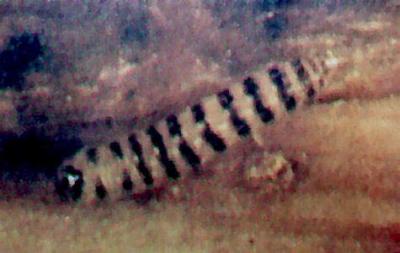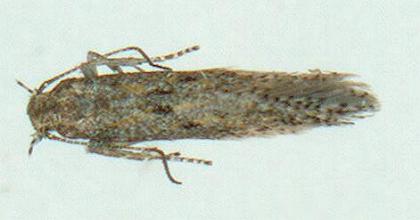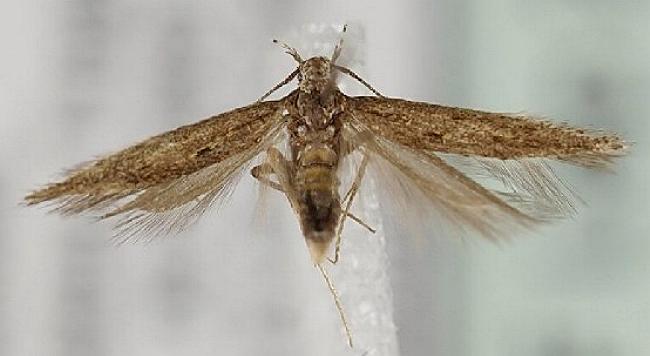
| Ratoon Shootborer (one synonym: Epithectis petiginella Mann, 1867) GELECHIINAE, GELECHIIDAE, GELECHIOIDEA | (donherbisonevans@yahoo.com) and Stella Crossley |

(Photo: courtesy of the Bureau of Sugar Experiment Stations,
Bundaberg, Queensland)

| Ratoon Shootborer (one synonym: Epithectis petiginella Mann, 1867) GELECHIINAE, GELECHIIDAE, GELECHIOIDEA | (donherbisonevans@yahoo.com) and Stella Crossley |

(Photo: courtesy of the Bureau of Sugar Experiment Stations,
Bundaberg, Queensland)
This Caterpillar is an agricultural pest of crops in POACEAE such as
It bores into the young shoots. The caterpillar grows to a length of about 0.5 cm.
It pupates in a frail cocoon covered in frass in the debris on the surface of the soil. The pupa has a length of about 0.5 cm. The adults emerge after about 12 days.

The adults are greyish brown. The males are smaller than the females and have black dots, and a wingspan of about 0.8 cm. The females have white flecks, and a wingspan of about 1 cm.
The eggs are pale yellowish-green, flecked with blue and pink.

The species occurs from the Mediterranean, across Africa and through Asia, including
and also in Australia, where it has been found in
The species is very difficult to control, as the larvae are so well protected in their tunnels, and most of the damage has been done by the time the infestation is discoved.
Further reading :
J.R. Agnew (ed.),
Australian Sugarcane Pests,
Bureau of Sugar Experiment Stations (Indooroopilly)
1997, p. 44.
Otto Staudinger,
Diagnosen nebst kurzen beschreibungen neuer Andalusischer Lepidopteren,
Stettin Entomologische Zeitung,
Volume 20, Parts 7-9, (1859), pp. 241-242, No. 86.
 caterpillar |  butterflies |  Lepidoptera |  moths |  caterpillar |
(updated 9 August 2004, 7 September 2024)